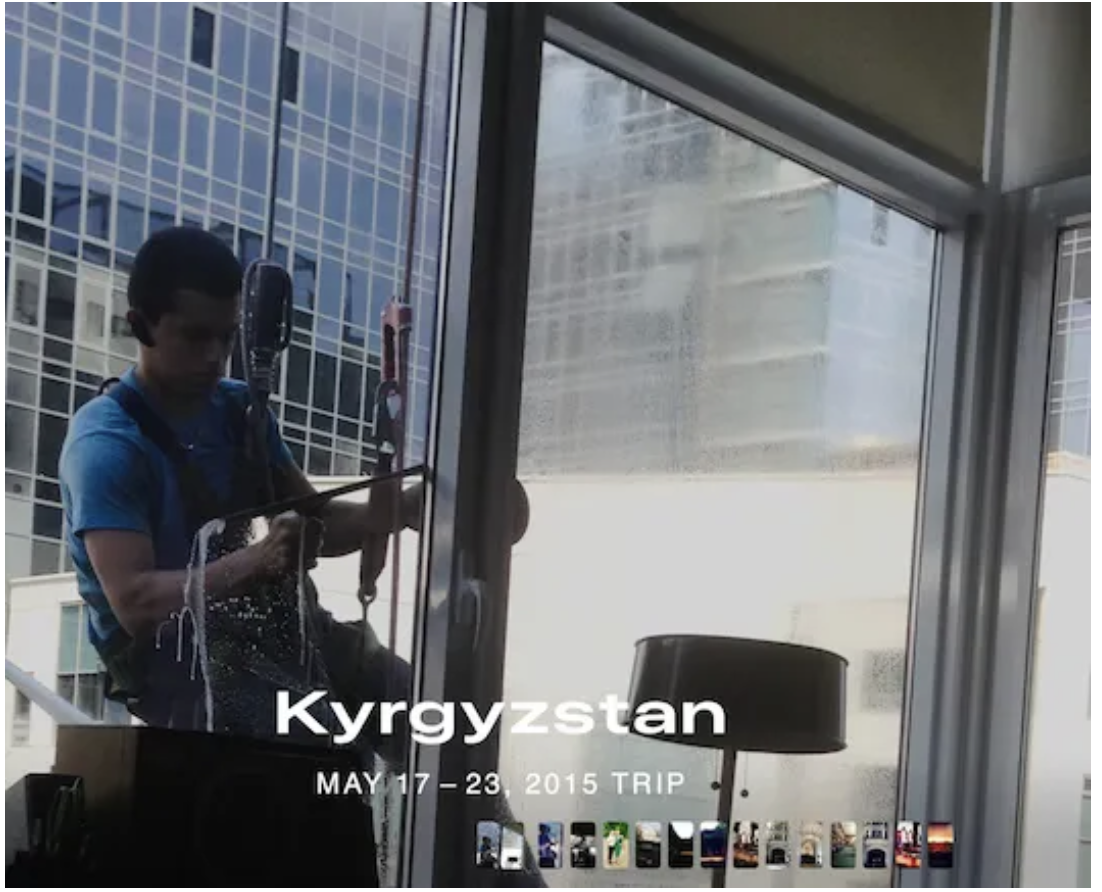Most of them range from banal to sweet, with a brilliant and heartfelt one occasionally thrown into the mix.
I’m talking about my iPhone’s self-directed fondness for creating curated collections of photos under the Memories tab.
Apple started auto-generating Memories in the Photos app with iOS 10, released in September 2016.
My phone basically decides all by itself to automatically curate trips, events, and people.
Since then, each iOS version has added refinements.
In 2020, Memories started incorporating titles (“Pet Friends,” “At the Shore,” etc.), and in 2021 began integrating with Apple Music.
Over the last three years, it’s become increasingly AI-driven, often producing uncanny results.
Therefore, please imagine my surprise this morning when I awoke to its newest offering: a trip I apparently took ten years ago to Kyrgyzstan.
Not only have I never been to Kyrgyzstan, but until this morning it was a country I had honestly never heard of.
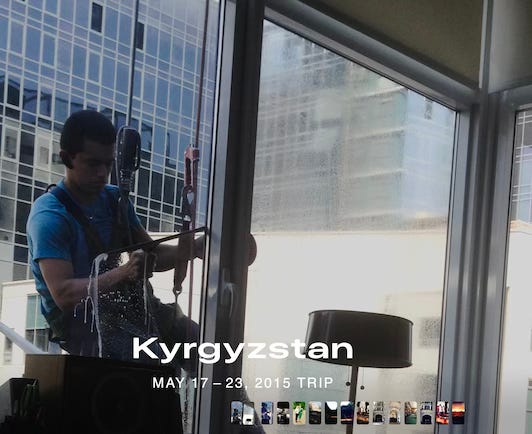
Allow me to save you a google.
Kyrgyzstan, now officially the Kyrgyz Republic, is a landlocked country in Central Asia bordered by Kazakhstan, Uzbekistan, Tajikistan, and China.
Its capital is Bishkek, a name that comes from the churn used to make fermented mare’s milk.
Kyrgyzstan is a little smaller than South Dakota, or about the same size as Nebraska.
Its population is 7.3 million people (vs. 8.4 million in NYC).
And the official languages are Russian and (of course) Kyrgyz.
From here the mystery deepens.

Kyrgyzstan’s flag — but I bet you already knew that.
This week I was also reading Mitch Horowitz, historian of alternative spirituality and practical mysticism.
Horowitz reflects that:
Ralph Waldo Emerson observed in his 1841 essay “Compensation” (which I reread at least once a year) that we often look back on the difficulties of the past with a kind of serenity—relieved that certain challenges are safely tucked into prior years and that we successfully emerged from them, frequently with benefit and refinement.
This act may be more than just memory: it may be creation.
Since the theme I’m exploring this month is Dancing With Time — meditation HERE — I was particularly struck by this reconception of memory as a creative act.
Neuroscience backs this up.
We may think of memory as reaching back and retrieving something from a long-lost file cabinet, but that’s not the case.
Each time we recall something, our brain actually rebuilds the memory from scattered neural traces.
Oddly enough, neurologically it’s more like remixing a song than pulling up a photo in an album — which means memories can subtly change each time we recall (or really re-create) them.
Even so, I still think the Memories tab has gotten a little carried away.
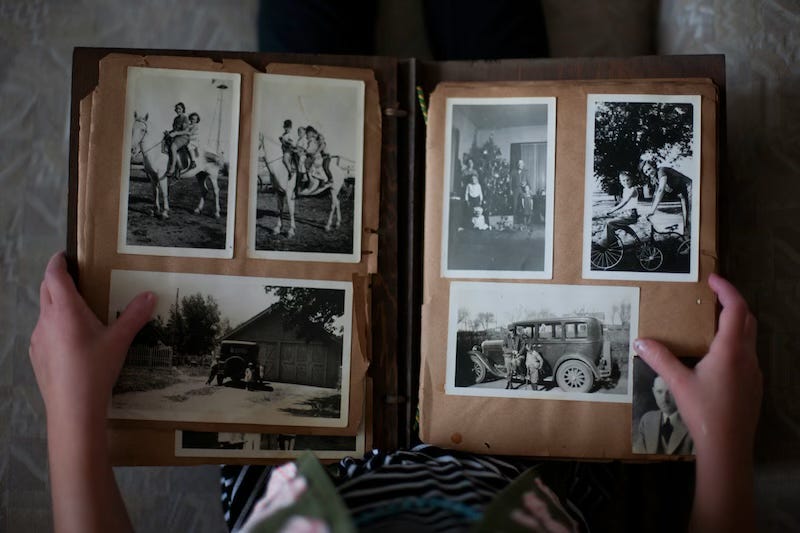
My “Kyrgyzstan trip” consists of 16 photos taken over 6 days.
The first three are all from the same Friday morning, photos of the window washer I suddenly saw outside my NYC window.
The next is a Sikh cab driver’s dashboard during a conversation where I asked him about the religious iconography he had on display and if I could take a photo.
I was riding in his cab to a small park on the Upper West Side where I took the next photo, one of a very happy young couple after they exchanged wedding vows.
A wonderful yoga teacher friend and her architect partner, I was actually the officiant for their marriage ceremony that day.
(Just FYI, they’re still together and now have two kids.)
The next photos are from a few days later: generic campus pictures from a Yale reunion I breezed through.
I only attended the morning event, where I was invited to teach a yoga class in a dingy basement.
The series ends with a shot of the New York City skyline at sunset, the kind of photo I took quite frequently back then.
When I moved into that apartment, there was only a parking lot across the street; within two years a 41-story apartment building was erected and I captured its construction daily.
Bottom line: although I’ve never been, I’m pretty sure none of these reads particularly “Kyrgyzstan-ish.”
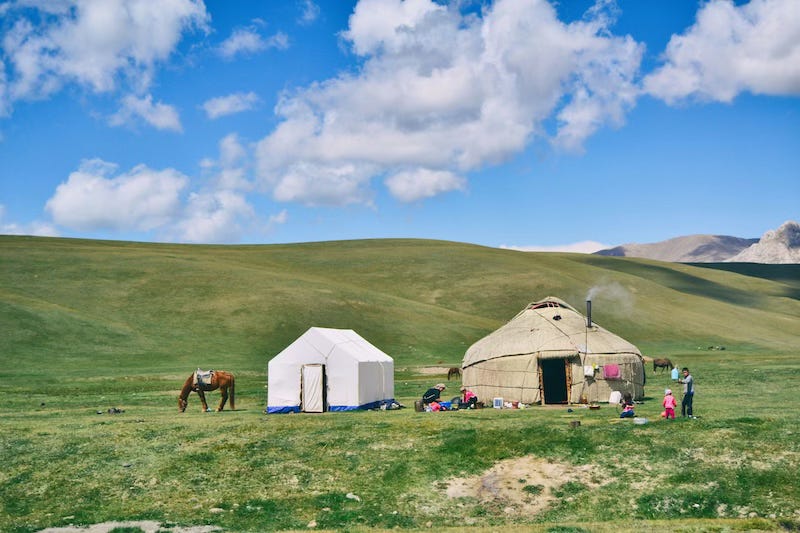
An actual photo from Kyrgyzstan (definitely not mine)
Perhaps ironically, I also faced another battle with time and memory this week.
Specifically, I’d given the link to this summer’s beta-testers for the new book/journal who might want to pre-order copies or even be early supporters of the project HERE.
The web designer I’ve been working with is usually A+ in executing my vision, but somehow something got lost in translation this time.
Perhaps, more accurately, he did what I told him to do — but he neglected to tell me it was a bad idea.
After I mocked-up the product page and told him the info for the checkout, in my mind, we were all set.
It was a two step process.
(Or so I thought).
What became a huge problem for a few people, however, was that there was no cart — a middle-ground where you could add or subtract from your purchases before checking out.
You were simply stuck with whatever you’d selected from the product page.
If you went back and tried to start fresh, all previous selections were still there.
Before you knew it, you were stuck with 13 books in your checkout, whether you wanted them or not.
In trying to simplify the process, I’d created something like our traditional concept of memory: items accumulate but never reset.
There’s no way to delete anything.
In a really bad way, it was incredibly “sticky,” forcing you to keep repeating a loop you could never edit or adjust — a shopping purgatory from which there was, alas, no escape.
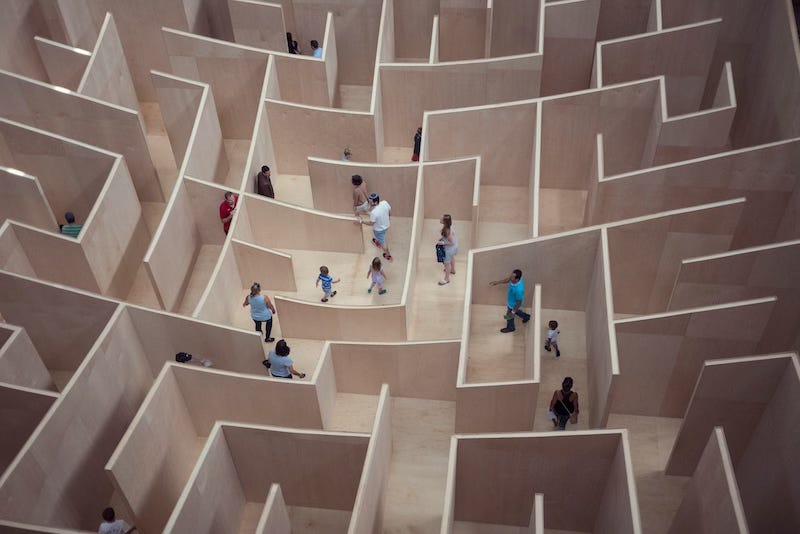
I shared all the photos from that Memories collection with my friend ChatGPT to see if we could figure out how they were categorized as a Kyrgyzstan trip.
Neither of us could find any visual clues to account for the mislabeling.
The best explanation seemed to be a Location Metadata Glitch.
Apparently, sometimes photos get tagged with the wrong GPS coordinates (or default to a strange one) — and the app groups them under that location.
(In case you’re wondering, it’s 6,200 miles from downtown Bishkek to the Upper West Side).
Yet if memory itself is a creative act, perhaps we can’t really define this as failure.
Like my window washer, it may simply be clearing the horizon for unforeseen global opportunities.
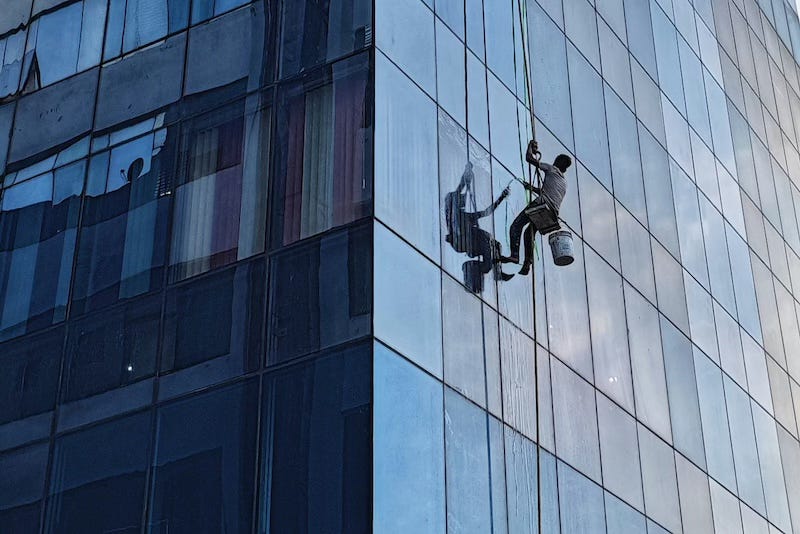
Horowitz includes a line I really love, one he credits to the rascal podcast host Duncan Trussell.
In one episode, Trussell described the philosophy of Neville Goddard as ‘remembering from the future.’
Neville Goddard often speaks about ‘living from the end,’ meaning embodying the feeling of the wish fulfilled.
Goddard uses it less to mean a step-by-step plan or strategy and more about occupying the state of mind and heart of the person who already has/does/is the thing.
It’s about seeing, sensing, and yes remembering as though the outcome already exists.
More than just New Age nonsense, once again neuroscience backs this up because remembering and imagining share the same circuits.
When you recall the past and when you envision the future, brain scans show that you light up overlapping networks (especially the hippocampus).
Remembering and dreaming are both literally creative forms of time travel, and if we’re wise, we get to choose where we go.
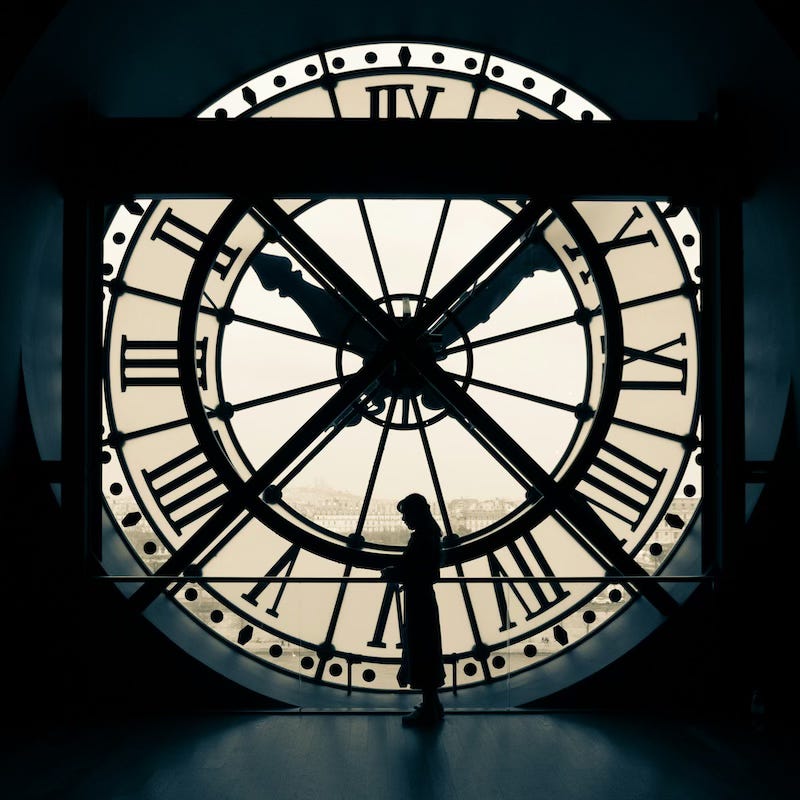
It’s funny how for the last decade, my phone’s memories have been quietly running in the background, organizing themselves around themes, events, and narratives both real and entirely imagined.
As my shopping cart glitch — now fixed HERE! — illustrates, things work better when we realize that our experience of time doesn’t have to be linear.
Indeed, greater happiness results when we understand we can go back and edit the past more effectively.
Since memory creates — and we can indeed ‘remember from the future’ — philosophers and now neuroscientists suggest the same thing:
We are less like archaeologists and more like DJs, ones who are able to grow more graceful at Dancing with Time.
Tell A New Story | Transform Your Life

P.S. We’re launching very soon but if you want to be an early supporter of the new book — and Vlad and I would love it if you did — visit HERE.

